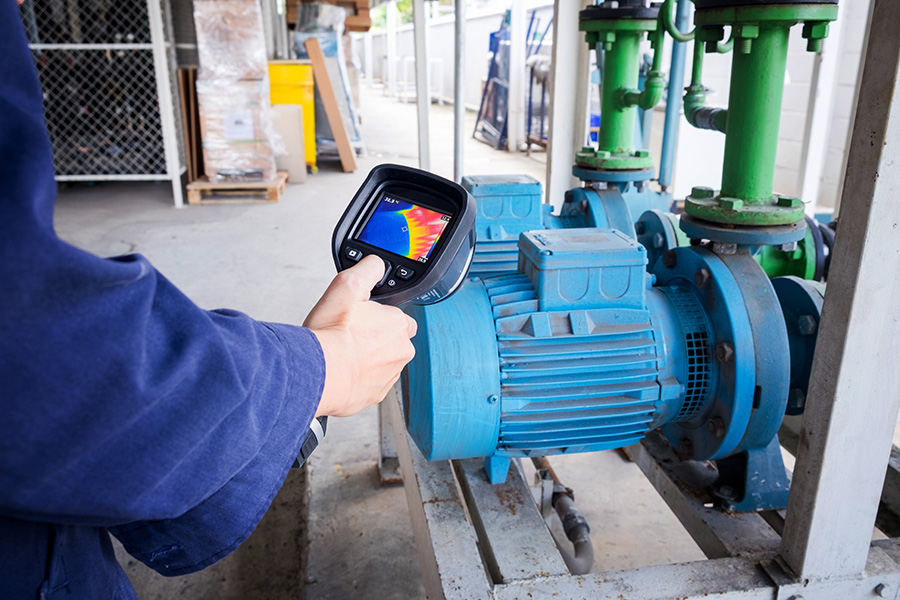 Once a standalone application, a CMMS must increasingly integrate with other applications in institutional and commercial facilities and share key data throughout organizations
Once a standalone application, a CMMS must increasingly integrate with other applications in institutional and commercial facilities and share key data throughout organizationsSpecifying CMMS Based on Facility Needs
While the CMMS software is similar, managers in schools, hospitals, and commercial office buildings, will all have different CMMS needs.
Managers in education, health care, and commercial office facilities focus on similar aspects of a CMMS during specification and implementation, but their approaches and processes can differ greatly. As a result, their priorities during specification can vary.
“Health care facilities typically have significant compliance standards to meet for patient safety and security,” says Tommy Gunn with AwareManager. “That means the focus is primarily on preventive maintenance, inspections and special space management for operating rooms, outpatient rooms, etc. Education facilities are keyed up on a CMMS with the ability to track aged infrastructure, manage costs, meet health and safety requirements, and track data from multiple buildings in one central location for easy reporting.”
No matter what type of facility a manager is responsible for, one of the most important aspects of the job is to keep tenants and visitors comfortable and happy.
“Keeping tenants satisfied is critical in commercial facility management, so they will need a CMMS that has an easy-to-use portal that tenants can submit work orders or visitor requests to that can be automatically routed and assigned to the facility management team to follow up,” Gunn says “Commercial facilities are also seeking a next-generation CMMS that has innovative features like space planning and management, automated workflows for work requests, and the ability to communicate with smart building technology. Workplace design has had a huge impact on what commercial facility managers look for in a CMMS because they need to have the ability to manage constantly changing floor plans and track what desks are in use and what desks are open.”
Given these differences, managers need to focus on selecting a CMMS that will provide tangible benefits for their facilities’ operations and activities. The most important tactic managers can uses during specification is asking insightful questions.
“Managers should ask CMMS providers a few questions,” Gunn says. “Will my data be tracked, delivered and managed in one easy-to-use system? Are you able to take decisive action based on the insight you’re getting from the system’s analytics? Can the software integrate with other systems your business relies on?
“As you begin your search, also determine what metrics are key to your business success. Focusing on these metrics will help managers shift your focus from ‘What can this software do?’ to ‘What will this software help me accomplish? Software selection no longer falls in the hands of one single team. There are now multiple stakeholders involved in the buying process, including (information technology). Each stakeholder group should determine their specific pain points and how a CMMS will help solve those challenges.”
Post-installation issues
CMMS success does not end with specification. After selecting the most appropriate software based on specific facility needs, managers and technicians need to consider several issues in order to ensure its reliable operation.
One of the most important post-installation considerations for managers is to make sure technicians understand CMMS requirements, features and functions.
“Some of the most talented building and maintenance minds are not as comfortable with technology as those who have recently entered the marketplace,” Smith says. “In order to maximize the effectiveness of the CMMS, each member of the team should feel comfortable with the functionality.”
As facilities continue to incorporate a host of technologies that are designed to ensure energy efficiency, reliability and safety, managers need to be sure their CMMS is capable of meeting, incorporating and integrating with these technologies.
“Next-generation CMMS should grow and evolve as your business does,” Gunn says, adding that this evolution brings new responsibilities for managers. “Regularly review and evaluate your facility management processes, and implement new processes when needed to keep up with industry trends. An advanced CMMS will be flexible enough to be able to fit any transformation your organization goes through.”
Related Topics:













